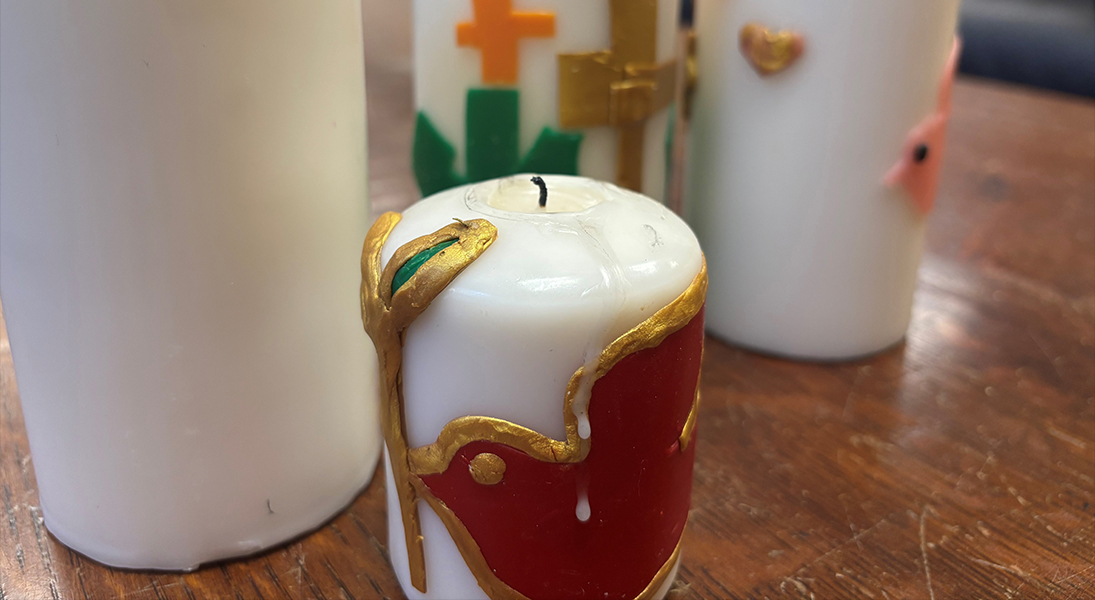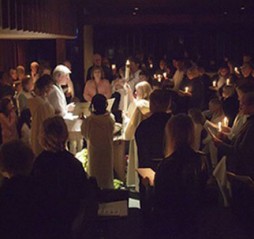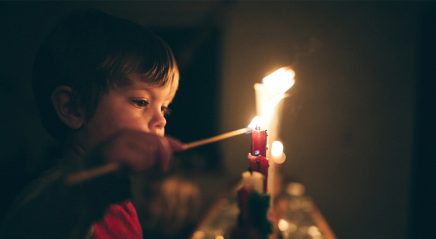I like to begin faith formation classes with my congregation the same way each year, grounded in our common identity as beloved children of God through baptism. I invite teachers to tell a story called “The Light” by Sonja M. Stewart and Jerome W. Berryman. In telling the story, I light a candle for each child and call them by name, an intentional reflection of the baptism liturgy.
This year I added my all-time-favorite craft to the mix and had the children decorate their own candles using Stockmar modeling wax. You can cut it with cookie cutters or scissors. You can roll it, mix it and figure out what works for whatever you’re envisioning. With just the heat of your hands and pressure, you can affix it to your candle. There’s not really a way to get it “wrong” in art.
This wax can be used to make family candles, paschal candles, baptismal remembrance candles and as a fidget in a pre-K classroom during rest time. It’s earthy. And when used thoughtfully, this simple craft material can encourage richly embodied experiences of prayer and faith.
Last year the prayer life of my fifth and sixth grade youth group wasn’t flowing as I knew it could, as I’d seen it flow with other kids the same age. I realized that I could set the tone in the way I usually do with younger children: I modified and told “The Light.” It seemed to ground us some.
Then we spent a few weeks talking about identity and baptismal identity. We practiced saying our gifts aloud.
Each week my students grew a little braver, a little more vulnerable and a little brighter. It’s not always comfortable naming the ways that we let our light shine in front of other people. But their classmates and adults affirmed them over and over again.
Yes, you’re a good friend.
Yes, you’re good at soccer because you practice hard.
Yes, you try new things.
Yes, you listen.
Yes, you’re social.
Yes, you give to those who are struggling to make ends meet.
Yes, you pack care kits for people.
Yes, you ask good questions.
Yes.
The ways that God has created us to be, to shine, are always met with a holy yes.
Affirming our identities
As part of those lessons around baptism and identity, I invited the fifth and sixth graders to decorate candles as an artistic reflection of their unique and beloved selves. Each candle is a little different from its neighbor. (One of the candles clearly resembles a snowman with a halo.)
And now, each week, after the sun has set and the light has dimmed, 20 or so pillar candles shine brightly on the little coffee table.
“The Lord be with you,” I say. And those 20 voices respond, “And also with you.” Then they share what’s on their hearts with one another and God. While their eyes are focused on the candlelight, they don’t think about how they’re perceived. They just share.
It’s like that when we focus on the light of Christ: We lose a bit of our need to control the image we project out into the world. And maybe then we can more clearly hear God’s holy “yes” to who we are.
That holy “yes” in our most vulnerable moments is perhaps most clearly made understandable in the rite of baptism. We are gifted and hold fast to an identity that God wants us to believe with our whole being: “Yes, you are a beloved child of God.”
While I’m fairly convinced that I will use “The Light” to start the faith formation year each fall, I believe this is also an excellent craft and lesson for Lent. In the early church, Lent was a time of preparation for baptism. It is a good time to affirm our identity as beloved children of God.
Imagine an intergenerational lesson on baptism followed by crafting all the baptismal candles for the coming year. Maybe you could melt down the previous year’s paschal candle and make baptismal candles from that wax.
Imagine inviting a youth artist to design your paschal candle based on a theme and then have them use the Stockmar wax to complete the design elements.
Imagine a family event where families decorate candles that they light for the first time on Easter Sunday, when they’re gathered with family and friends to celebrate the resurrection of our Lord.
It bears repeating: In art, there’s not really a way to get it wrong or to miss the mark. Just let your light shine.









